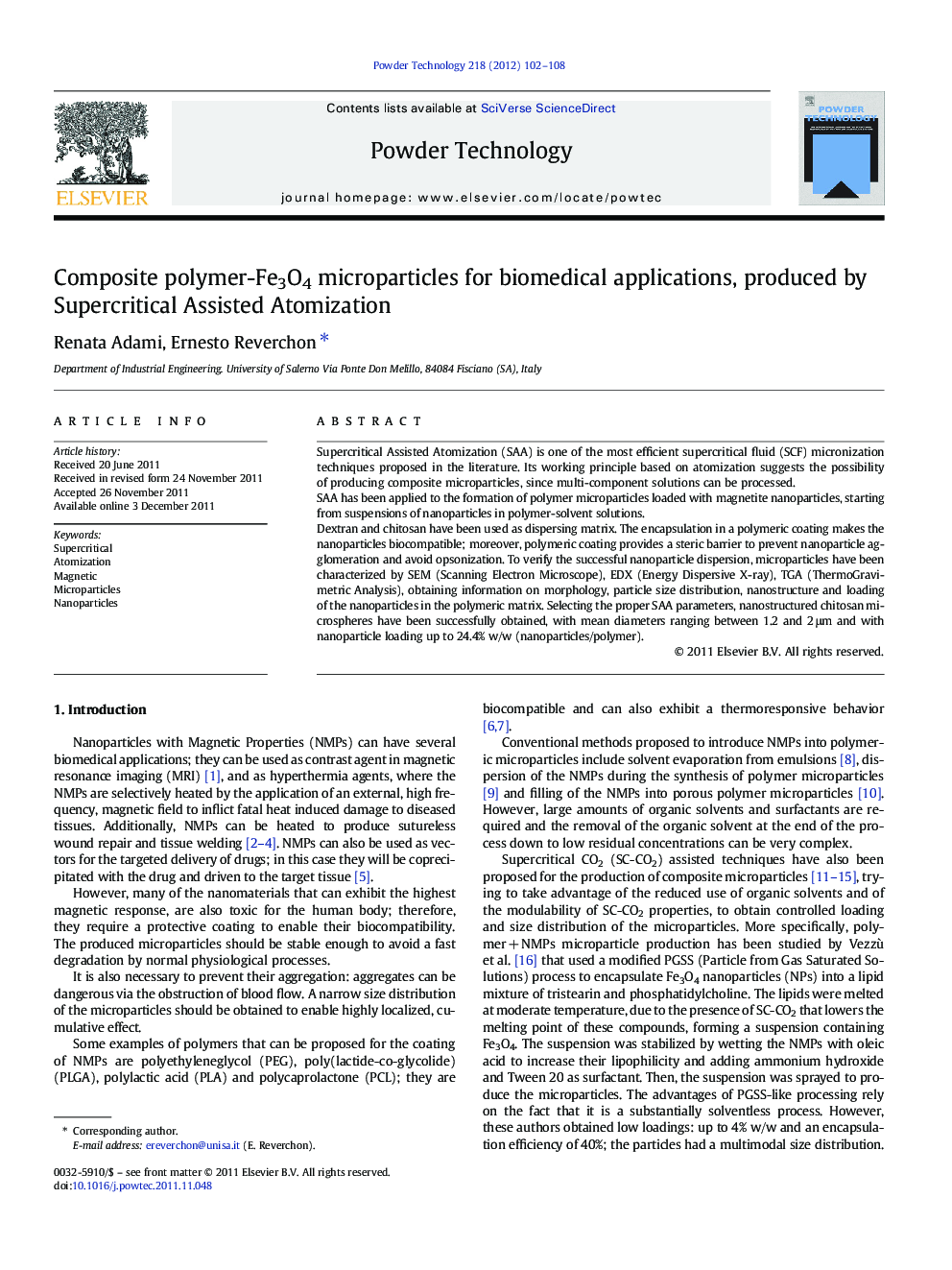| Article ID | Journal | Published Year | Pages | File Type |
|---|---|---|---|---|
| 237356 | Powder Technology | 2012 | 7 Pages |
Supercritical Assisted Atomization (SAA) is one of the most efficient supercritical fluid (SCF) micronization techniques proposed in the literature. Its working principle based on atomization suggests the possibility of producing composite microparticles, since multi-component solutions can be processed.SAA has been applied to the formation of polymer microparticles loaded with magnetite nanoparticles, starting from suspensions of nanoparticles in polymer-solvent solutions.Dextran and chitosan have been used as dispersing matrix. The encapsulation in a polymeric coating makes the nanoparticles biocompatible; moreover, polymeric coating provides a steric barrier to prevent nanoparticle agglomeration and avoid opsonization. To verify the successful nanoparticle dispersion, microparticles have been characterized by SEM (Scanning Electron Microscope), EDX (Energy Dispersive X-ray), TGA (ThermoGravimetric Analysis), obtaining information on morphology, particle size distribution, nanostructure and loading of the nanoparticles in the polymeric matrix. Selecting the proper SAA parameters, nanostructured chitosan microspheres have been successfully obtained, with mean diameters ranging between 1.2 and 2 μm and with nanoparticle loading up to 24.4% w/w (nanoparticles/polymer).
Graphical abstractFigure optionsDownload full-size imageDownload as PowerPoint slideHighlights► Production of polymer microparticles loaded with magnetite nanoparticles. ► Nanostructured chitosan microspheres with mean diameters between 1.2 and 2 μm. ► Nanoparticle loading up to 24.4% w/w (nanoparticles/polymer) obtained. ► Encapsulation efficiency from 61% up to 85%, depending from the initial loadings. ► Promising results for the future production of systems polymer + Fe3O4 + drug
